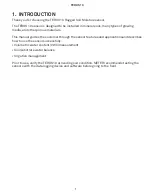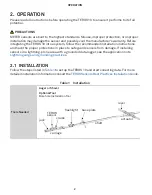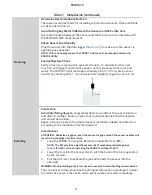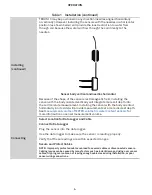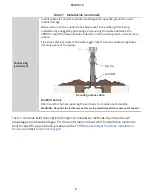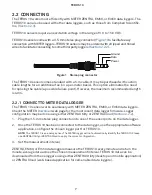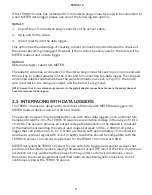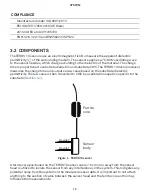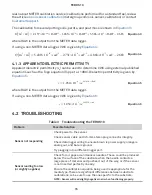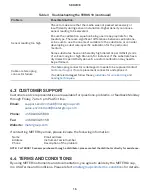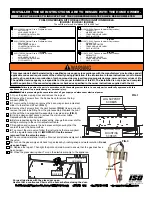
9
TEROS 10
If the TEROS 10 cable has a standard 3.5-mm stereo plug connector and will be connected to
a non-METER data logger, please use one of the following two options.
Option 1
1. Clip off the 3.5-mm stereo plug connector on the sensor cable.
2. Strip and tin the wires.
3. Wire it directly into the data logger.
This option has the advantage of creating a direct connection and minimizes the chance of
the sensor becoming unplugged. However, it then cannot be easily used in the future with a
METER readout unit or data logger.
Option 2
Obtain an adapter cable from METER.
The adapter cable has a connector for the stereo plug connector sensor jack on one end and
three wires (or pigtail adapter) on the other end for connection to a data logger. The stripped
and tinned adapter cable wires have the same termination as seen in
; the brown
wire is excitation, the orange is output, and the bare wire is ground.
NOTE: Secure the 3.5-mm stereo plug connector to the pigtail adapter connections to ensure the sensor does not
become disconnected during use.
2.3 INTERFACING WITH DATA LOGGERS
The TEROS 10 sensor is designed to work most efficiently with METER data loggers. All
METER readout devices use a 3.0-VDC excitation.
The sensors, however, may be adapted for use with other data loggers, such as those from
Campbell Scientific, Inc. The TEROS 10 requires an excitation voltage in the range of 3.0 to
15.0 VDC. The sensors produce an output voltage that depends on the dielectric constant
of the medium surrounding the sensor, and ranges between 1,000—2,500 mV. Any data
logger that can produce a 3.0- to 15.0-VDC excitation with approximately 10-ms duration
and read a volt level signal with 12-bit or better resolution should be compatible with the
TEROS 10 sensor. The current requirement for the TEROS 10 is 12 mA at 3 VDC.
METER designed the TEROS 10 sensor for use with data loggers and readout devices that
provide short excitation pulses, leaving the sensors turned OFF most of the time. Continuous
excitation not only wastes battery power, but may, under certain circumstances, cause
the sensor to exceed government specified limits on electromagnetic emissions. Do not
continuously power the TEROS 10 sensor.





